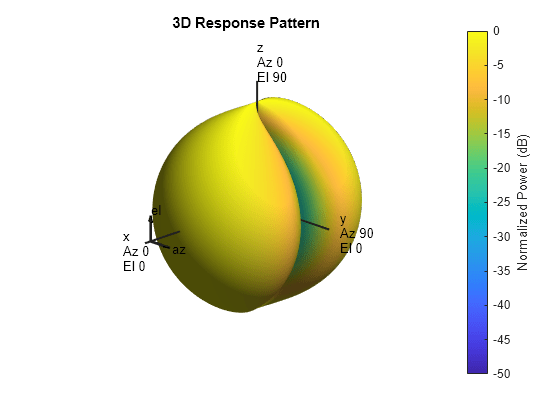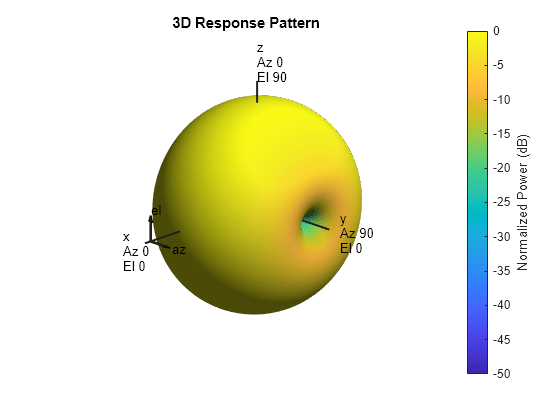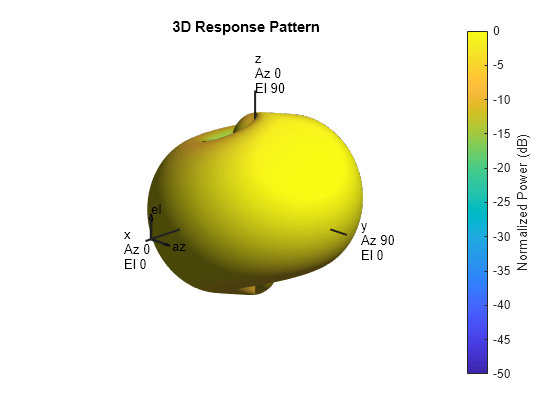phased.ShortDipoleAntennaElement
Short-dipole antenna element
Description
The phased.ShortDipoleAntennaElement object models a
short-dipole antenna element. A short-dipole antenna is a center-fed wire whose length is much
shorter than one wavelength. This antenna object only supports polarized fields.
To compute the response of the antenna element for specified directions:
Create the
phased.ShortDipoleAntennaElementobject and set its properties.Call the object with arguments, as if it were a function.
To learn more about how System objects work, see What Are System Objects?
Creation
Syntax
antenna = phased.ShortDipoleAntennaElement
antenna = phased.ShortDipoleAntennaElement(Name,Value)
Description
antenna = phased.ShortDipoleAntennaElementh, to model a short-dipole antenna
element.
antenna = phased.ShortDipoleAntennaElement(Name,Value)antenna, with each specified property Name
set to the specified Value. You can specify additional name-value pair arguments in any
order as
(Name1,Value1,...,NameN,ValueN).
Properties
Usage
Description
RESP = antenna(H,FREQ,ANG)RESP, at the operating
frequencies specified in FREQ and in the directions specified in
ANG. For the short-dipole antenna element object,
RESP is a MATLAB®
struct containing two fields, RESP.H and
RESP.V, representing the horizontal and vertical polarization
components of the antenna's response. Each field is an
M-by-L matrix containing the antenna response at
the M angles specified in ANG and at the
L frequencies specified in FREQ.
Input Arguments
Output Arguments
Object Functions
To use an object function, specify the
System object™ as the first input argument. For
example, to release system resources of a System object named obj, use
this syntax:
release(obj)
Examples
Algorithms
The total response of a short-dipole antenna element is a combination of its frequency response and spatial response. This System object calculates both responses using nearest neighbor interpolation and then multiplies the responses to form the total response.
References
[1] Mott, H., Antennas for Radar and Communications, John Wiley & Sons, 1992.
Extended Capabilities
Version History
Introduced in R2013a





